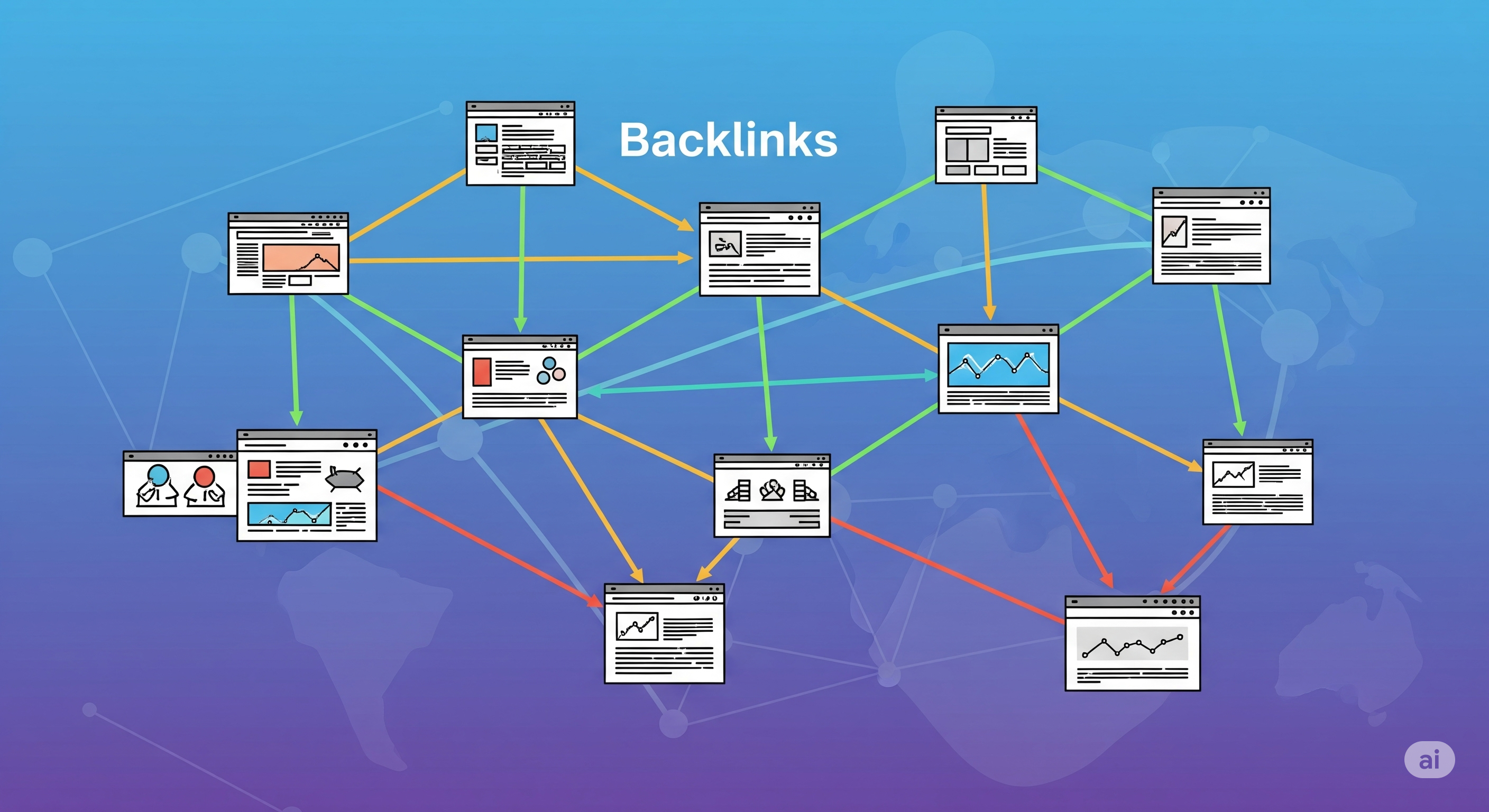
In the vast and ever-evolving landscape of Search Engine Optimization (SEO), one constant remains crucial for achieving online visibility and driving organic traffic: backlinks. Understanding what backlinks are and how to get them is not just a good-to-know SEO tactic; it's a fundamental pillar of a robust and successful digital marketing strategy. This comprehensive guide will delve deep into the world of backlinks, equipping you with the knowledge and actionable strategies to build a powerful backlink profile that will propel your website to the top of search engine results pages (SERPs).
What Are Backlinks, and Why Are They So Important?
In the simplest terms, a backlink is a link from one website to another. Think of them as "votes of confidence" or "referrals" in the digital world. When a reputable website links to your content, it signals to search engines like Google that your page is valuable, trustworthy, and a credible source of information. The more high-quality backlinks you have, the more authoritative your website appears to search engines, leading to higher rankings for your target keywords.
The significance of backlinks in SEO cannot be overstated. They are a primary ranking factor for Google, influencing your website's:
- Search Engine Rankings: A strong backlink profile is directly correlated with higher rankings in SERPs.
- Website Authority: Backlinks from established and respected websites enhance your own site's domain authority and page authority.
- Referral Traffic: Beyond SEO, backlinks can be a significant source of direct referral traffic, bringing new and relevant audiences to your website.
- Brand Visibility and Credibility: When your brand is consistently linked to from authoritative sources, it builds trust and establishes your reputation as a leader in your industry.
- Faster Indexing: Backlinks help search engine crawlers discover and index your content more quickly.
Deconstructing Backlinks: The Different Types You Need to Know
Not all backlinks are created equal. Understanding the various types of backlinks is essential for building a well-rounded and effective link-building strategy.
- Dofollow vs. Nofollow Links:
- Dofollow Links: These are the most valuable type of backlink for SEO. A
dofollowlink passes "link juice" or authority from the linking website to the linked website. By default, all links aredofollowunless specified otherwise. - Nofollow Links: A
nofollowlink has a special HTML tag (rel="nofollow") that tells search engines not to pass any authority. While they don't directly impact your search rankings in the same way asdofollowlinks, they can still drive valuable referral traffic and contribute to a natural-looking backlink profile.
- Dofollow Links: These are the most valuable type of backlink for SEO. A
- Editorial Backlinks: These are the holy grail of link building. Editorial backlinks are earned naturally when another website links to your content because it is a valuable resource. They are a pure endorsement of your content's quality and are highly valued by search engines.
- Guest Blogging Backlinks: These are links acquired by writing and publishing an article on another website in your industry. Guest blogging is an excellent way to gain high-quality, relevant backlinks while also establishing your expertise and reaching a new audience.
- Business Profile Backlinks: Creating profiles on reputable business directories, social media platforms, and industry-specific sites can earn you valuable backlinks. Ensure your profiles are complete and consistently updated.
- Image Backlinks: When another website uses an image you've created (such as an infographic or a high-quality photograph) and provides a clickable link back to your site as the source, this is an image backlink.
- Relationship-Based Backlinks: These links are built through genuine relationships with other website owners, bloggers, and industry leaders. This can involve mentioning their content, collaborating on projects, or simply engaging with them in a meaningful way.
The Litmus Test: How to Differentiate High-Quality from Low-Quality Backlinks
The quality of your backlinks is far more important than the quantity. A handful of high-quality backlinks will do more for your SEO than hundreds of low-quality ones. Here's what to look for when evaluating potential backlink opportunities:
| Feature | High-Quality Backlink | Low-Quality Backlink |
|---|---|---|
| Website Authority | Comes from a reputable, high-authority website with a strong backlink profile of its own. | From a low-authority, new, or spammy website. |
| Relevance | The linking website and page are topically relevant to your own content. | The linking website has no connection to your industry or niche. |
| Anchor Text | The clickable text of the link is a relevant keyword or a natural-sounding phrase. | The anchor text is generic ("click here") or over-optimized with an exact match keyword. |
| Link Placement | The link is placed naturally within the body of the content. | The link is in a footer, sidebar, or a list of unrelated links. |
| Website's Neighborhood | The linking site links to other reputable sources. | The linking site is part of a link farm or links to spammy websites. |
| Link Type | Dofollow links pass the most value. |
A high proportion of nofollow links from low-quality sources. |
Your Blueprint for Success: Actionable Strategies to Acquire High-Quality Backlinks
Now for the most anticipated part: how do you actually get these coveted backlinks? Here are some of the most effective and ethical link-building strategies, broken down into actionable steps.
1. Become a Content Powerhouse: The Foundation of All Link Building
Without exceptional, link-worthy content, even the most sophisticated outreach efforts will fall flat. Your content is the magnet that attracts backlinks.
- Create Ultimate Guides and In-Depth Resources: Produce long-form, comprehensive content that covers a topic in its entirety. Think of it as the go-to resource that other websites will want to reference.
- Publish Original Research and Data: Conduct your own studies, surveys, or experiments and publish the findings. Unique data is highly linkable as it provides a primary source for other content creators.
- Develop Stunning Infographics and Visual Assets: Visual content is easily shareable and can be a powerful tool for generating backlinks. Create professional and informative infographics that other websites will want to embed in their own content (with a link back to you, of course).
- Produce High-Quality Video Content: Videos are incredibly engaging and can be a great way to earn backlinks, especially if you create tutorials, product demonstrations, or insightful interviews.
2. Master the Art of Guest Blogging
Guest blogging remains one of the most effective ways to build high-quality, relevant backlinks.
- Step 1: Find Guest Blogging Opportunities: Use Google search operators like
[your keyword] + "write for us"or[your keyword] + "guest post"to find websites in your niche that accept guest contributions. - Step 2: Vet the Websites: Analyze the domain authority, content quality, and audience engagement of potential guest blogging targets.
- Step 3: Craft a Personalized Pitch: Avoid generic email templates. Personalize your outreach by mentioning a specific article you enjoyed on their blog and explaining why your proposed topic would be a great fit for their audience.
- Step 4: Write an Exceptional Piece of Content: Once your pitch is accepted, deliver a high-quality, well-researched, and engaging article that provides real value to the reader.
- Step 5: Include a Contextual Backlink: Naturally weave a relevant backlink to your own content within the body of the guest post.
3. The Skyscraper Technique: Reaching New Heights in Link Building
Coined by SEO expert Brian Dean, the Skyscraper Technique is a powerful method for earning high-quality backlinks.
- Step 1: Find Link-Worthy Content: Identify a popular piece of content in your niche that has already generated a lot of backlinks.
- Step 2: Create Something Even Better: Improve upon the original content by making it more comprehensive, up-to-date, visually appealing, or by adding unique insights.
- Step 3: Reach Out to the Right People: Contact the websites that linked to the original piece of content and introduce them to your new and improved version. Explain why it's a better resource for their audience and ask them to consider linking to it.
4. The Power of Broken Link Building
Broken link building is a win-win strategy where you help website owners fix dead links on their site while earning a backlink for yourself.
- Step 1: Find Relevant Websites with Broken Links: Use tools to scan websites in your niche for broken outbound links.
- Step 2: Identify the Content That Was Originally Linked To: Understand the context of the broken link to see if you have a relevant piece of content to offer as a replacement.
- Step 3: Reach Out and Offer a Solution: Contact the website owner, politely point out the broken link, and suggest your content as a suitable replacement.
5. Leverage the Power of Public Relations (PR)
Digital PR is an excellent way to get your brand in front of a wider audience and earn high-authority backlinks from news outlets and industry publications.
- Create Newsworthy Content: Develop content that is timely, relevant, and has a compelling story that journalists will want to cover.
- Build Relationships with Journalists: Connect with reporters and editors in your industry and provide them with valuable insights and information.
- HARO (Help a Reporter Out): Use services like HARO to respond to journalists' queries and offer your expertise. If your quote is used, you'll often receive a backlink.
Ethical Link Building: Playing by the Rules for Long-Term Success
In your quest for backlinks, it's crucial to adhere to ethical, "white-hat" SEO practices. Avoid the following "black-hat" tactics, which can lead to severe penalties from search engines:
- Buying Links: Paying for backlinks is a direct violation of Google's guidelines.
- Excessive Link Exchanges: Engaging in large-scale "I'll link to you if you link to me" schemes can be flagged as manipulative.
- Using Private Blog Networks (PBNs): Creating a network of websites solely for the purpose of linking to your main site is a risky and outdated tactic.
- Keyword-Stuffed Anchor Text: Over-optimizing your anchor text can appear unnatural to search engines.
The Role of E-E-A-T in Modern Link Building
Google's E-E-A-T guidelines (Experience, Expertise, Authoritativeness, and Trustworthiness) are more important than ever, and they directly impact your link-building efforts. To align with E-E-A-T:
- Seek links from experts: Aim for backlinks from websites and authors who are recognized experts in your field.
- Build your own authority: Consistently publish high-quality, expert-level content to establish your own website as an authoritative source.
- Focus on trustworthy sites: Prioritize backlinks from websites that are known for their accuracy, transparency, and credibility.
The Takeaway: Building a Powerful Backlink Profile is a Marathon, Not a Sprint
Acquiring high-quality backlinks is an ongoing process that requires patience, persistence, and a commitment to creating exceptional content. By understanding the fundamentals of backlinks, focusing on quality over quantity, and implementing the ethical strategies outlined in this guide, you can build a robust backlink profile that will not only boost your SEO but also drive sustainable growth for your business. Remember, at the heart of every successful link-building campaign is the creation of value for your audience, for the websites that link to you, and ultimately, for your brand. Start building your backlink strategy today with Webxloo's expertise and watch your online presence soar.




 Phone Consultation
Phone Consultation
 Request a quote
Request a quote
 Text a Message
Text a Message